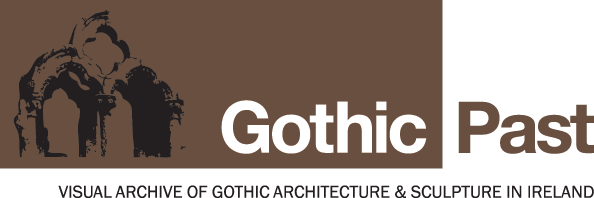Browse Items (33 total)
Sort by Title [A-Z] | [Z-A]
Abbeyknockmoy Cistercian Monastery, loose stone fragments, dumbell cloister base
Athenry Dominican Priory, north chancel wall, canopied tomb niche, base
Athenry Dominican Priory, north chancel wall, canopied tomb niche, base of jamb
Athenry Dominican Priory, north chancel wall, sedilia, base
Athenry Dominican Priory, north wall of north transept, wall arcade, base
Athenry Dominican Priory, south nave wall, niche, base
Athenry Dominican Priory, south nave wall, niche, base
Cistercian Abbey, Jerpoint, Co Kilkenny, interior - base (detail)
Cistercian Abbey, Jerpoint, Co Kilkenny, interior - base (detail)
Tags: Architecture, Base, Cistercian architecture, County Kilkenny, Ecclesiastical architecture, etc., Europe, Gothic - Ireland, horizontal roll, Kilkenny, Kilkenny (Ireland) - Buildings, Leinster, Medieval - Ireland, Mouldings, plinth, Republic of Ireland, Romanesque architecture, spur, structures, torus
Cistercian Abbey, Jerpoint, Co Kilkenny, interior - nave, south aisle from the west
Tags: aisle, Arcades (Architecture), Architecture, Architecture - Ireland - Kilkenny (County), Bases (Architecture), Capitals (Architecture), chamfered moulding, Cistercian architecture, County Kilkenny, cusp, Ecclesiastical architecture, engaged shaft, Europe., Gothic - Ireland, Leinster, Medieval - Ireland, Medieval capitals (Architecture), Monasteries - Ireland, Nave, ogee light, perpyn wall, Pier, plinth, pointed arch, Republic of Ireland, Romanesque, scallop capital, Stone Carving, Thomastown, transept, transept chapel, vessica
Cistercian Abbey, Jerpoint, Co Kilkenny, interior - north nave arcade, west windows
Tags: Arcades (Architecture), Architecture, Capitals (Architecture), chamfered moulding, Cistercian architecture, clerestory, County Kilkenny, cylindrical pier, Ecclesiastical architecture, etc., Europe, Gothic - Ireland, Hood moulding, Jerpoint, Kilkenny (Ireland) - Buildings, Leinster, Medieval - Ireland, Nave, perpyn wall, plinth, pointed arch, Republic of Ireland, Romanesque, round - headed window, scallop capital, square pier, structures, west gable
Cistercian Abbey, Mellifont, County Louth, exterior - north transept, door jamb
Tags: Architecture, Architecture - Ireland - Louth, Bases (Architecture), Cistercian architecture, Collon, County Louth, Doorways, Ecclesiastical architecture, Europe, gothic, jamb, Leinster, Medieval - Ireland, Monasteries - Ireland, Mouldings, orders, plinth, portal, Republic of Ireland, roll - and - fillet shaft, round plinth, round shaft, water - holding base
Cistercian Abbey, Mellifont, County Louth, interior - lavabo base
Tags: Architecture, Architecture - Ireland - Louth, architrave, Base, Cistercian architecture, Collon, continuous moulding, Doorways, Ecclesiastical architecture, Europe, Keel, keeled moulding, lavabo, Leinster, Louth, Medieval - Ireland, Monasteries - Ireland, plinth, portal, Republic of Ireland, Roll moulding, Romanesque, Stone carving - Ireland., water - holding base
Cistercian Abbey, Mellifont, County Louth, interior - lavabo, shaft, base and plinth
Tags: Architecture, Architecture - Ireland - Louth, architrave, Bases (Architecture), beak moulding, Cistercian architecture, Collon, County Louth, Ecclesiastical architecture, Europe, lavabo, Leinster, Medieval - Ireland, Monasteries - Ireland, Moulding, Mouldings, plinth, Republic of Ireland, Romanesque, shaft, spiked hollow, water - holding base




















